
Optinet 2018 | optical device Conference
Date: 2018-06-13Number: 5027Iccsz news (Editor: joy) on June 13, 2018, the annual China Optical Network seminar was solemnly opened at JW Marriott Hotel, Yuecai, Beijing. The wonderful speeches made by the celebrities at the first day of Optinet 2018 not only left a deep impression on the audience and full of harvest, but also made people look forward to the next day's special meeting.
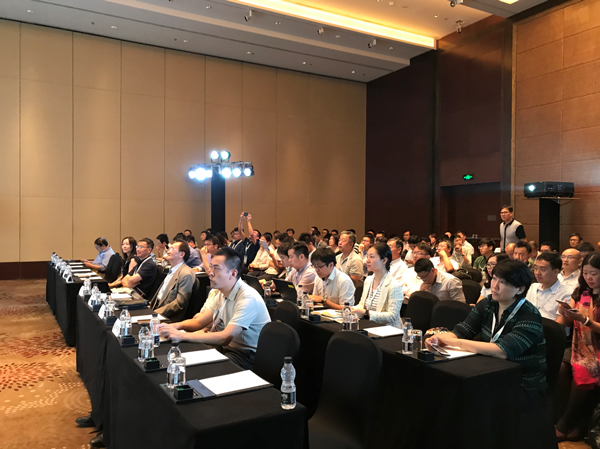
The development of optical devices has always been an important link in the field of optical communication. What kind of surprise will the development trend of the next generation of optical devices bring to us? How will these projects affect the global market of optical network equipment, optical modules and components? What opportunities and challenges will optical network suppliers face in the future? All of this was discussed at the optical device Symposium of Xunshi information consulting organization on the 14th.
This special meeting on optical devices was hosted by Xunshi information consulting (Shenzhen) Co., Ltd. and was strongly supported by Qingdao Hisense Broadband Multimedia Technology Co., Ltd. and feiang communication technology Nantong Co., Ltd! At the same time, CETC instruments, yitianlongShenzhen Xunte Communication Technology Co., LtdIn addition, the company also exhibited its representative products in the Convention and exhibition area.
On the day of the conference, the optical device special conference hall was full of people, and the wonderful speeches of the lecturers were fully recognized by the audience!
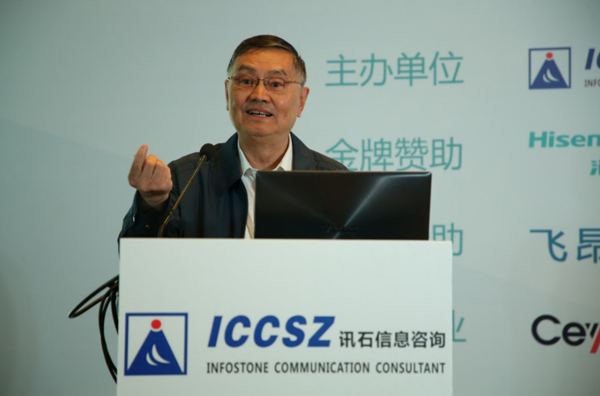
At 9:00 a.m. on the 14th, Wei Leping, executive deputy director of the science and Technology Commission of the Ministry of industry and information technology and director of the China Telecom Science and Technology Commission, came to the special venue of optical devices and delivered a speech to the guests. Mr. Wei affirmed the importance of optical devices in optical communication. The breakthrough of each generation of optical network system is first of all the breakthrough of optical devices. He sincerely thanked Xunshi company for organizing optical device experts to gather in Beijing optical network seminar, and wished the optical device symposium a complete success!
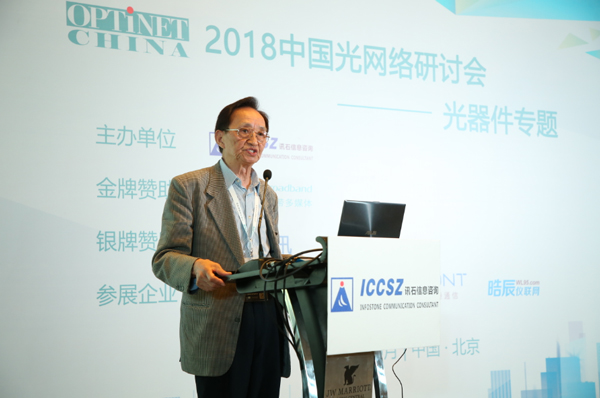
Chen Yixin, a teacher from Shanghai Jiaotong University, also gave a speech on the stage as a friend of Xunshi. Chen said that the optical webinar has become an important conference in China. Last year, Xunshi cooperated with the conference for the first time to create a special conference on optical devices. The addition of the special topic on optical devices made the conference more extensive. This year, the industrial chain gathered together to exchange activities with each other and listen to the voice of the optical device module company. He believes that it will help to grasp the market trend of the industry and the research, judgment and selection of technology.
Mr. Chen further said that cloud computing and the rapid development of data centers due to traffic explosion have also driven the upgrading of optical basic hardware. In the future, the intelligence of the network needs to rely on optical fiber and optical devices. This demand is hard to estimate. The industry is also optimistic about the future. However, the bottleneck challenge of optical devices is also very severe. The industry should work together to break through the common problems of the industry and master the core technology.
With the speech of director Wei and teacher Chen, the conference speech officially began
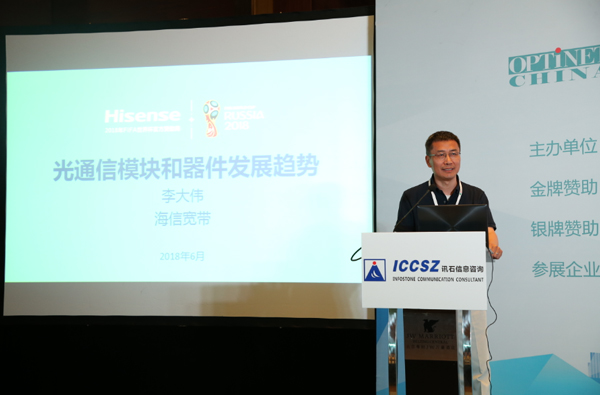
First of all, Li Dawei, CTO of Qingdao Hisense Broadband Multimedia Technology Co., Ltd., will give us a speech. The theme of his speech is the development trend of optical communication module and device technology. Dr. Li said that in the past decade, in addition to core optoelectronic chips, domestic enterprises have occupied a dominant position in chip packaging, component packaging, module production capacity and communication equipment. Packaging is China's strong point, but laser is a fatal defect. In 1990, the traditional TO-can package began to be used. In 2010, cob (chip on board) began to be applied to optical device packaging, which has more applications in multi-mode products. With the high-speed development of 100g, micro optical assembly began to be widely used in 2014, which requires high coupling accuracy. Since 2016, with the large investment of Intel, IBM and other companies, silicon optical integration has promoted the rapid industrial development of this technology, and is expected to become a technology application accounting for more than half in the future.
Dr. Li believes that the difficulty and cost of NG PON2 are very high. However, with the continuous efforts of the American operator Verizon, the industrial progress of this standard has made great breakthroughs. The difficulties of this standard include tunable light source, temperature control and noise requirements. Due to the addition of tunable transmission and tunable reception, the cost of NG PON2 needs to be further reduced. With regard to the change of the electrical interface rate of the module, Dr. Li predicted that the number of 100g will be at least 5 million in 2018 and will increase by 30% in 2019. The whole industry is waiting to see whether the single wave 100g solution and 56g baud DML can become a low-cost technology. WDM can reduce the cost, but adjustable WDM also needs to face the challenges of cost reduction and reliability in a variety of application environments.
Dr. Li finally concluded that with the increase of the signal rate and the complexity of the modulation mode, the proportion of the cost of optical devices in the optical module decreases; Optical device packaging technology has developed from traditional to packaging to cob, micro optics and silicon optical integration; The module electrical interface rate will be increased from 25g to 50g (from 2019) and 100g (from 2021), and the mainstream optical module rate in the data center will be increased from the current 100g to 400g (from 2020); Low cost and wavelength tunable WDM module will play an important role in wireless forward transmission and new generation access network.
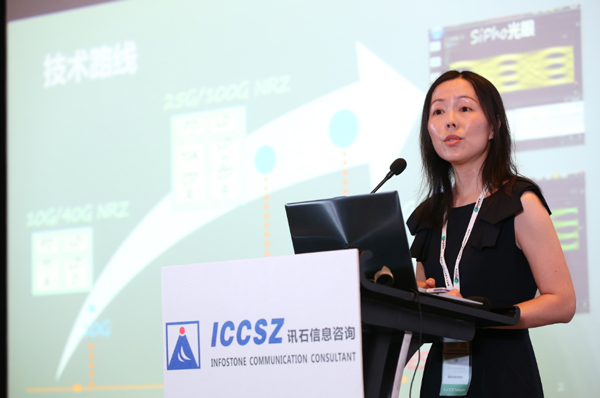
Next, Mao Wei, CTO of feion communications, brought the opportunities and challenges of 100g / 400g China chip. Dr. Mao said that it takes about 15 years from 10g to 25g, but it only takes 2-4 years from 25g to 50g. Technical challenge: 16nm is developing towards 7Nm, but the cost will rise rapidly. However, the number of optical modules is only several million, so it is difficult to reduce the cost through dilution. Silicon optical devices are divided into active and passive devices, and active devices include modulator PD, etc. Since silicon cannot make lasers, because lasers are still discrete, Dr. Mao also introduced several coupling schemes to the audience. Dr. Mao believes that in the future, silicon light and integrated circuits will be mixed together. The difficulties lie in whether the substrate is friendly, photoelectric design and cost performance. Dr. Mao also talked about the opportunities of 400g China core and the idea of localization. She mentioned the barrel principle, and paid attention to the subdivided fields to improve the whole industrial chain. Respect the market and listen to customers. Strengthen cooperation between upstream and downstream. We should also pay attention to the training of talents.
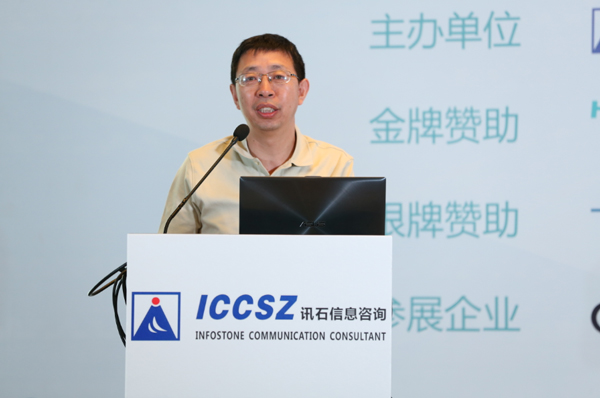
The third speech today comes from an Junming, R & D director of Henan Shijia Photonics Technology Co., Ltd. Dr. an brought us the keynote speech of "photoelectron chip industrialization". Dr. an said that the optical network has become an infrastructure to drive the global economy and improve people's lives. In 2017, 83% of the net growth of global FTTH came from China. The Agency predicted that the global market value of FTTH would increase from US $9.5 billion in 2017 to US $37 billion in 2027, with an annual compound growth rate of 14.4%. The optical communication industry chain has ushered in a new round of upgrading in the fiber to the home, data center, 4G and backbone network.
Dr. an said that in the next generation network twdm PON or WDM PON, wavelength division multiplexing technology will be further applied, and the demand for WDM related chips will increase accordingly. In addition, IEEE has developed several standards IEEE 802.3ba/802.3bs for 40 / 100g and 200 / 400g, and several multi-source protocols (MSAs) have been developed within each manufacturer, such as cwdm8 and swdm. Regarding the application of AWG in the data center, he thinks that in 4 & times; 10g and 4 & times; In 25g, besides TFF scheme, AWG scheme is also applied. Moreover, because the AWG solution has the advantages of lower finished products and smaller volume, it will have a larger application space in the future 100g, 200g or 400g data center market, and there is a tendency to replace a large number of TFF solutions.
AWG demand in 5g: G In the Metro standard, the 100g 20ch cyclic AWG wavelength scheme is defined. The uplink and downlink bands are separated by six channel wavelength guard bands. Industrial grade AWG requirements: commercial grade AWG, working temperature range of 0 ℃? 75 ℃, in the future WDM-PON network and even 5g solutions, the AWG working temperature range needs to be further increased to industrial grade - 40 ℃? At 85 ℃, there are more stringent requirements for thermal and non thermal packaging, and the requirements for chip level non thermal AWG are further improved.
Dr. an said that the overall progress of chip has made some breakthroughs, but the industrialization of chip R & D is still very urgent, and from a strategic point of view, the industrialization of chip brooks no delay. He also said that the investment in chips is contradictory and requires long-term technology accumulation. However, after 4-5 years, the market capacity of a single chip is not equal to the return and time expectation of investors. In the next five years, with the promotion of the strategic level and the efforts of all parties, comprehensive breakthroughs will be made.
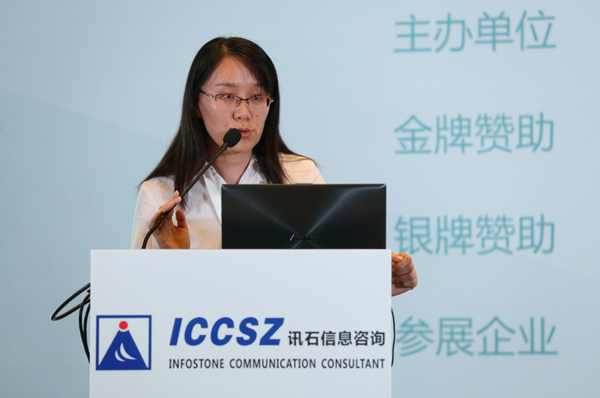
After the tea break, Huo Xiaoli, director of the optical communication research center of China Telecom Beijing Research Institute, gave us a keynote speech on the demand for optical modules in 5g prequel. Director Huo introduced the changes from 4G to 5g bearer network from three aspects: core network, intermediate transmission / return transmission and forward transmission. Director Huo said that the biggest challenge of 5g forward transmission is optical fiber resources. Optical fiber direct drive is the main one, and WDM technology is introduced to make up for the shortage of optical fiber resources. And the cost will be the key factor considered in the 5g forward transmission scheme. She said that 10km is the most important specification of 25g bidi optical module. However, in order to adapt to problems such as fiber aging and critical distance in the current network, specifications above 10km are still required. The power budget and bit error requirements are the most important factors affecting the specification selection.
She believes that the power budget of IEEE Ethernet standard cannot meet the demand of forward transmission. The 1270nm 25g bidi module has no objection, and 1310 or 1330 is still the focus of debate. Director Huo finally concluded that 5g development takes the lead. Optical fiber and optical transmission system are the pre foundation of 5g development. 5g forward transmission has the greatest demand for optical fiber and optical module. The principle of 5g forward transmission bearing is: optical fiber direct drive is the main and equipment bearing is the auxiliary. The 5g forward transmission bearing scheme is mainly optical fiber direct connection - 25g bidi, point-to-point WDM / OTN, and point to multipoint WDM.
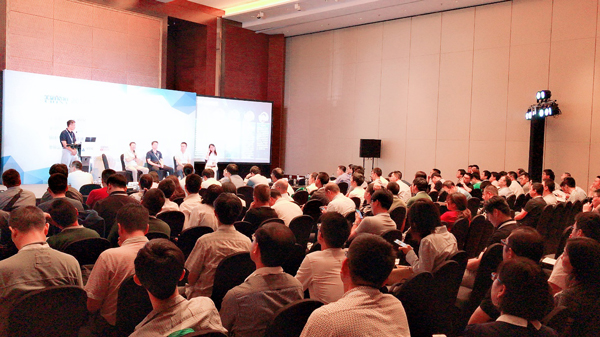
After director Huo's speech, the topic of optical devices ushered in a round table discussion. Xunshi invited Li Dawei, CTO of Hisense broadband, to preside over the forum. An Junming of Chinese Academy of Sciences, Ding Hai of xuchuang technology, Wang Zuodong of feiang communication and Huo Xiaoli of China Telecom Beijing Research Institute were guests. Many industry experts discussed the theme of "development of core module device chips". So far, Optinet 2018 optical device special conference has been successfully completed! The successful holding of this conference can not be separated from the strong support of Qingdao Hisense Broadband Multimedia Technology Co., Ltd. and feiang communication Nantong Co., Ltd. CETC instruments and meters, yitianlong, Xunte communication and Weichen instrument networking also shine brilliantly in the exhibition area of this conference and reap a lot. Of course, without the enthusiastic participation of many guests, the conference would not have been a complete success. We are willing to create a better tomorrow for the optical communication industry with the joint efforts of the entire industry!